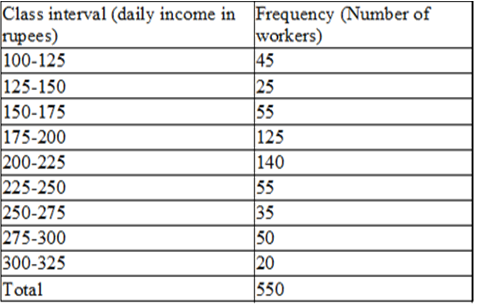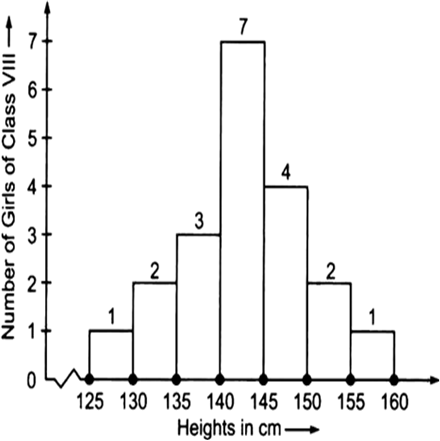Data Handling
Draw an appropriate graph to represent the given information.
Since, a comparison of two activities (walking and cycling) is to be represented, therefore a double-graph is drawn by taking the schools along x-axis and number of children along y-axis, using a scale of 1 cm = 5 children.
Sponsor Area
Some More Questions From Data Handling Chapter
Following are the marks scored by 30 students in a test out of 40 marks. Using tally marks prepare a frequency table:
|
30 |
18 |
27 |
15 |
25 |
28 |
15 |
30 |
|
35 |
36 |
25 |
30 |
20 |
28 |
17 |
30 |
|
36 |
35 |
35 |
18 |
30 |
17 |
30 |
|
|
25 |
36 |
28 |
25 |
25 |
18 |
16 |
Present the following data in the form of a grouped frequency distribution table having 6 classes of equal size (one of the class being 40–48):
|
30 |
39 |
58 |
17 |
34 |
50 |
23 |
37 |
|
42 |
49 |
55 |
59 |
19 |
28 |
47 |
49 |
|
18 |
60 |
56 |
36 |
58 |
35 |
55 |
37 |
|
25 |
34 |
39 |
61 |
53 |
33 |
36 |
53 |
|
61 |
62 |
39 |
53 |
21 |
18 |
28 |
23 |
Draw an appropriate graph to represent the given information.

Draw an appropriate graph to represent the given information.

Draw an appropriate graph to represent the given information.
Percentage wins in ODI by 8 top cricket teams.

A group of students were asked to say which animal they would like most to have as a pet. The results are given below:
dog, cat, cat, fish, cat, rabbit, dog, cat, rabbit, dog, cat, dog, dog, dog, cat, cow, fish, rabbit, dog, cat, dog, cat, cat, dog, rabbit, cat, fish, dog.
Make a frequency distribution table for the same.
Study the following frequency distribution table and answer the questions given below.
Frequency distribution of daily income of 550 workers of a factory

(i) What is the size of the class intervals?
(ii) Which class has the highest frequency?
(iii) Which class has the lowest frequency?
(iv) What is the upper limit of the class interval 250-275?
(v) Which two classes have the same frequency?
Construct a frequency distribution table for the data on weights (in kg) of 20 students of a class using intervals 30–35, 35–40 and so on.
|
40, |
38, |
33, |
48, |
60, |
53, |
31, |
|
46, |
34, |
36, |
49, |
41, |
55, |
49, |
|
65, |
42, |
44, |
47, |
38, |
39 |
Observe the histogram figure and answer the questions given below:

(i) What information is being given by the histogram?
(ii) Which group contains maximum girls?
(iii) How many girls have a height of 145 cm and more?
(iv) If we divide the girls into the following three categories, how many would there be in each?
150 cm and more -Group A
140 cm to less than 150 cm -Group B
Less than 140 cm -Group C
For which of these would you use a histogram to show the data?
(a) The number of letters for different areas in a postman’ bag.
(b) The height of competitors in an athletics meet.
(c) The number of cassettes produced by 5 companies.
(d) The number of passengers boarding trains from 7:00 a.m. to 7:00 p.m. at a station.
Give reasons for each.
Mock Test Series
Sponsor Area
NCERT Book Store
NCERT Sample Papers
Sponsor Area